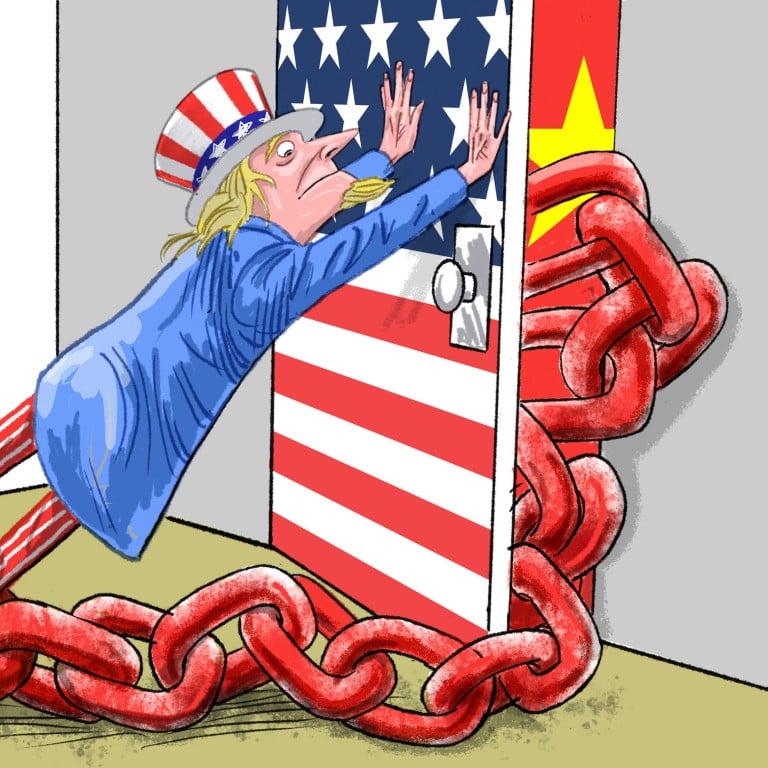
The US is still tied to China’s supply chains, at least for now
- Despite US friendshoring and nearshoring efforts, many global supply chains still depend on China indirectly
- Until US allies can develop transparent end-to-end supply chain solutions, America will continue to rely on Chinese manufacturing, directly or indirectly
Besides keeping Trump-era tariffs on Chinese imports, the Biden administration has also banned Chinese companies from buying advanced chips and chip-making equipment without special permission.
In response, US firms are “friendshoring”, or shifting manufacturing away from China to friendly countries. Dell is reportedly making at least 20 per cent of all its laptops in Vietnam this year. And Apple could shift 18 per cent of its global iPhone production to India.
On the surface, the US appears to have become less dependent on China. But is it really? If one digs deeper, one will find that many global supply chains depend on China indirectly.
It is a well-known secret that global supply chains are complex, and their operations opaque. McKinsey reported that only 2 per cent of surveyed companies had any visibility beyond their second-tier suppliers, or those that supply materials and parts to their direct suppliers.
Without visibility, supply chain provenance is challenging to determine. For instance, South Korea’s SK Hynix has stopped shipping chips to China’s Huawei since the US imposed export restrictions; the chip maker is investigating how its memory chips ended up inside Huawei’s latest phone, the Mate 60 Pro.
Where did Huawei get the advanced chips for its latest Mate 60 Pro smartphone?
However, when the US Customs and Border Protection conducts tests on garments using forensic analysis – tracing cotton to its point of origin by comparing a sample’s concentration of stable elements such as carbon, oxygen and nitrogen with those of the purported environment – the results are revealing. In May, 10 out of 37 tests showed links to Xinjiang.
Without supply chain visibility, the degree of direct and indirect dependency on China will never be known.
Consider the countries involved in company “friendshoring”. Vietnam’s exports to the US rose 13.6 per cent in 2022, while India’s exports to the US increased 43.1 per cent in 2021. On top of that, only 51 per cent of US imports from “low-cost” Asian countries came from China in 2022, down from 66 per cent in 2018. Therefore, one could conclude that the US has become less dependent on China. But this is far from the truth.
Anticipating the shift away from China, Chinese investment in Indonesia, Malaysia, the Philippines, Thailand and Vietnam has surged in recent years, surpassing US spending. In 2021, China’s direct investment into these Asian countries was over US$80 billion, whereas the US’ came to around US$50 billion.
Thus, many of the Southeast Asian factories making products for US firms may be owned by Chinese. Furthermore, many factories in the region are probably assembling parts that were made in China.
As the world’s factory, China has grown an massive, efficient ecosystem within the country to perform end-to-end supply chain operations that include refining metals, producing parts and assembling products. In the short term, many other Asian countries do not have the resources, capability or capacity to produce inputs such as mechanical or electrical parts, electric vehicle batteries and solar panels, faster, cheaper and better.
Huawei founder Ren Zhengfei maintains that he is ‘an Apple fan’
Thus, it is no surprise that China’s exports of electronics such as batteries and motors to these Asian countries have exploded. Indeed, in the first six months of this year, exports of Chinese electronic products rose to US$49 billion, up 80 per cent from 2018.
It then becomes possible for factories in countries such as Vietnam to assemble parts imported from China, change the country of origin, and ship the final product to the US without paying hefty tariffs.
The practice of transshipment is not new, but it has become more prevalent since the US-China trade war began in 2018. To avoid high tariffs, Chinese exporters ship parts or products to a country subject to lower US tariffs, change the country-of-origin label without substantially altering the products, and then export those goods to the US.
By adopting this strategy, everyone wins. China can continue to play an important role in global supply chains, countries friendly to the US can boost their economy, and firms can avoid paying hefty import tariffs.
The US is trading less with China directly by friendshoring or nearshoring its global supply chains. However, unless its allies can gear themselves up to develop end-to-end supply chain solutions with complete transparency, America will continue to depend on China, directly or indirectly.
In essence, de-risking global supply chains from China is making them even more complex and opaque. What a tangled web we weave.
Christopher Tang is a distinguished professor at the UCLA Anderson School of Management


